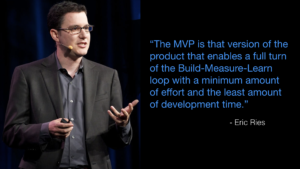 I’ve been re-reading Adam Grant’s book, Originals for the third time and this time, focusing on increasing output and not increasing quality. Sounds backwards doesn’t it? Most people I’ve worked with in the past want to create brilliant work but what Adam points out is, even geniuses like da Vinci had higher incidences of “brilliant work” because they were prolific creators. The more you create, the higher the chance that your output creates brilliant work.
I’ve been re-reading Adam Grant’s book, Originals for the third time and this time, focusing on increasing output and not increasing quality. Sounds backwards doesn’t it? Most people I’ve worked with in the past want to create brilliant work but what Adam points out is, even geniuses like da Vinci had higher incidences of “brilliant work” because they were prolific creators. The more you create, the higher the chance that your output creates brilliant work.
Many individuals I’ve worked with in the past want to create work that impresses. They spend so much time on trying to get it perfect that they actually produce anything.
If you haven’t yet read Originals yet then please get a copy. There are several other observations within it that can lead to some tremendous breakthroughs.



 “Somewhere there is a bridge engineer asking why any of you would drive over a bridge like you are.” I usually get a “WTF are you talking about?” look or response. The software engineers are pretty confused and I respond with “That’s the same look our end-users give us when we speak to them like that. Somewhere there’s a bridge engineer asking why there would be so many stationary, overloaded trucks on the bridge, and why someone would be so close to them, the bridge wasn’t designed with that in mind.” There are thousands of calculations dealing with compression, harmonics, wind, temperature, etc., do you as software engineers truly understand the bridge you’re driving on or do you just want to “use it” to get where you’re going? It’s the latter, get where you’re going. That’s the same for end-users – they don’t want to, nor should they have to, consider how the software was built in order to use it. SPAs are a prime example of this. Hitting the back button wipes a large portion of your selections yet it’s not obvious that a site is build as a single page. Software engineers ask “why would anyone do that” and end-users ask “why would anyone build it that way”. It happens all the time where software engineers are trying to explain to end-users why they shouldn’t hit the back button and it’s a prime example of engineering-glish.
“Somewhere there is a bridge engineer asking why any of you would drive over a bridge like you are.” I usually get a “WTF are you talking about?” look or response. The software engineers are pretty confused and I respond with “That’s the same look our end-users give us when we speak to them like that. Somewhere there’s a bridge engineer asking why there would be so many stationary, overloaded trucks on the bridge, and why someone would be so close to them, the bridge wasn’t designed with that in mind.” There are thousands of calculations dealing with compression, harmonics, wind, temperature, etc., do you as software engineers truly understand the bridge you’re driving on or do you just want to “use it” to get where you’re going? It’s the latter, get where you’re going. That’s the same for end-users – they don’t want to, nor should they have to, consider how the software was built in order to use it. SPAs are a prime example of this. Hitting the back button wipes a large portion of your selections yet it’s not obvious that a site is build as a single page. Software engineers ask “why would anyone do that” and end-users ask “why would anyone build it that way”. It happens all the time where software engineers are trying to explain to end-users why they shouldn’t hit the back button and it’s a prime example of engineering-glish.
 Your favorite song comes on the radio while you’re driving. You know the one. The one single song in all of music that makes everything seem ok. You reach down and crank it up. And to your surprise, your transmission is 200 feet behind you. This is one example of the Frustration & Astonishment Factor. Actions we take every day that, in one, and only one example, create untold destruction.
Your favorite song comes on the radio while you’re driving. You know the one. The one single song in all of music that makes everything seem ok. You reach down and crank it up. And to your surprise, your transmission is 200 feet behind you. This is one example of the Frustration & Astonishment Factor. Actions we take every day that, in one, and only one example, create untold destruction.

